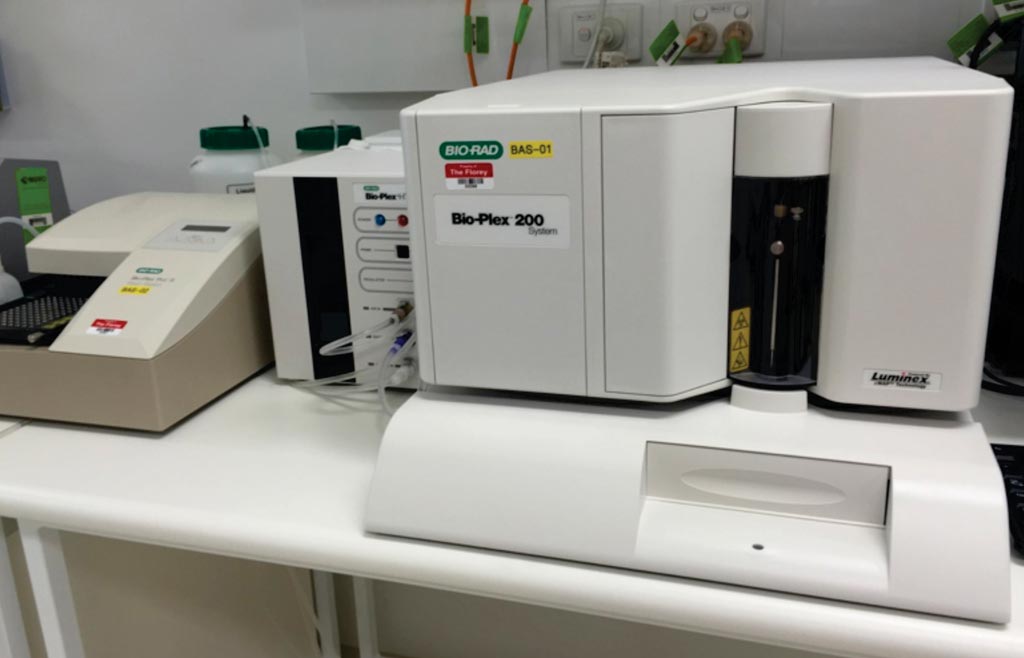Accurate Tool Developed to Track New HIV Infections
By LabMedica International staff writers
Posted on 04 Jan 2018
An effort is underway to develop a more accurate way to gauge the incidence of human immunodeficiency virus (HIV) infections in large populations, which will improve scientific studies and prevention strategies worldwide.Posted on 04 Jan 2018
Accurate HIV-1 incidence estimation is critical to the success of HIV-1 prevention strategies. Current assays are limited by high false recent rates (FRRs) in certain populations and a short mean duration of recent infection (MDRI).

Image: The Bio-Plex 200 is a suspension multiplexing array fluorescence reader used for multiplex assays that allows to measure up to 100 biomolecule of protein or nucleic acid in a single sample (Photo courtesy of Bio-Rad Laboratories).
A large team of scientists working with those at Duke University Medical Center (Durham, NC, USA) received for testing 132 well-characterized untreated specimens drawn within 800 days of estimated date of seroconversion (EDSC) (120 unique subjects) for MDRI estimation and 134 specimens (121 subjects) from untreated and 58 specimens (56 subjects) from treated longstanding infection for FRR estimation. Specimens were largely from subjects infected with subtypes B (56%) and C (43%).
The investigators profiled HIV-1–specific binding antibody responses in participant serum or plasma. They evaluated antibody binding to a unique and broad set of HIV-1 antigens that included gp120, gp140, and V1-V2 antigens of multiple subtypes (i.e., A, CRF01-AE, B, C, and CRF07-BC) from both sexes. Serum and plasma were diluted in binding antibody multiplex assays (BAMA) and detection performed on either a Bioplex 200 or Luminex FM3D machine.
The scientists found that discriminant function analysis identified an optimal set of measurements that were subsequently evaluated in a 324-specimen blinded biomarker validation panel. These biomarkers included clade C gp140 IgG3, transmitted/founder clade C gp140 IgG4 avidity, clade B gp140 IgG4 avidity, and gp41 immunodominant region IgG avidity. MDRI was estimated at 215 day or alternatively, 267 days. FRRs in untreated and treated subjects were 5.0% and 3.6%, respectively.
Georgia Tomaras, PhD, a professor in the Department of Surgery and senior author of the study, said, “Recent advances, including effective anti-retroviral drugs that both treat and prevent HIV infections, have changed the landscape in the HIV field. Improved methods for classifying recent infection from older infections are critically needed to help identify the most effective prevention strategies. Having a more accurate HIV incidence test could substantially reduce costs for scientists, because they would need a much smaller sample size to enroll in studies.” The study was published on December 21, 2017, in the journal JCI Insight.
Related Links:
Duke University Medical Center














